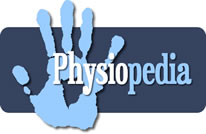Announced today is the formation of the first wiki-based collaborative online educational resource for the global physiotherapy community. Physiopedia is an ambitious project which aims to eventually offer an evidence-based knowledge resource for physiotherapy professionals throughout the world. Through utilising collaborative wiki technology Physiopedia is a place where all physiotherapists can participate by contributing, sharing and building knowledge to develop a global understanding. For educators Physiopedia offers an opportunity to involve their students in this knowledge creation process as part of an educational program.
Individuals and educational institutions around the world are contributing to Physiopedia in various ways. Educational institutions are engaging their students to contribute content as part of their educational program, expert clinicians are contributing seed content free of copyright restrictions and individuals are contributing content out of their own personal interest and as part of their professional development.
Making high quality information for physiotherapy professionals freely available via a collaborative, open and constantly evolving website has the potential to promote the physiotherapy profession and improve patient care. Over the next few years, there will be a growing community of contributors who will create pages in different clinical areas covering anatomy, physiology, conditions, assessment and interventions. Other professional resources that will be created include evidence based practice, outcome measures and research methods. These pages will be constructed using the latest evidence and will be constantly evolving with updated information.
Today Physiopedia is calling for students, clinicians and educational institutions to contribute content. Professionals around the world who contribute to Physiopedia will have the opportunity to make a difference by promoting our profession and in improving the health of our patients. Physiopedia will also serve as an important place for professionals to create a presence on the Web and become known for their specialties.
Physiopedia’s founder is Rachael Lowe from the UK, a physiotherapist and e-learning specialist who combines these skills with the specific aim of utilising web technology for physiotherapy education. She has developed this site with the global community in mind in consultation with Eric Robertson, Assistant Professor at the Medical College of Georgia in the USA.
Educational institutions and clinicians have begun to contribute content to Physiopedia and the site will continually develop to provide a valuable promotional and educational resource to the global physiotherapy community. This free public site will officially launch later in 2009 but this preview site becomes available today at www.physio-pedia.com.




